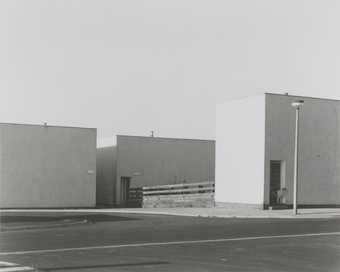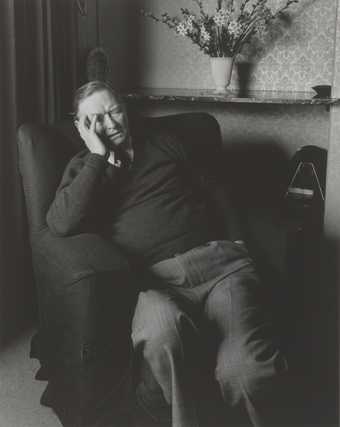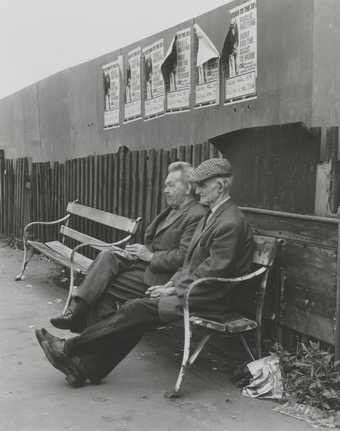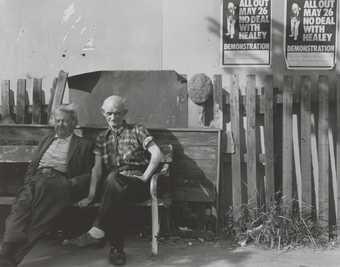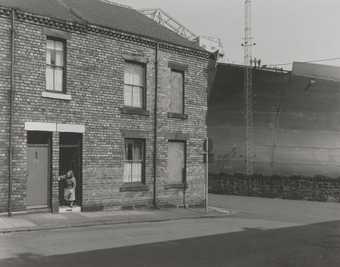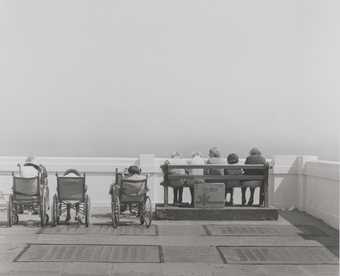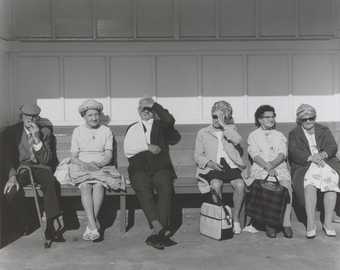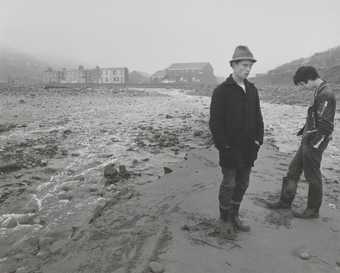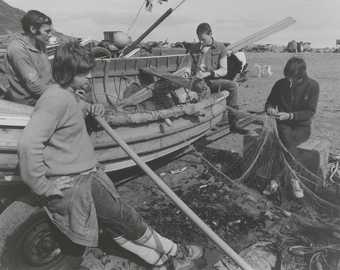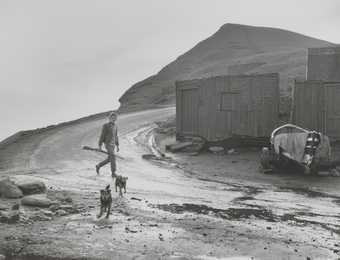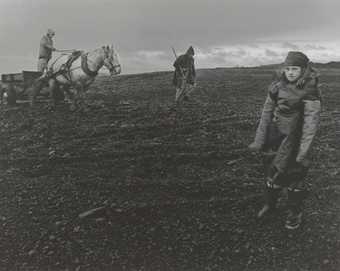
In Tate Britain
Prints and Drawings Room
View by appointment- Artist
- Chris Killip 1946–2020
- Medium
- Photograph, gelatin silver print on paper
- Dimensions
- Image: 511 × 402 mm
- Collection
- Tate
- Acquisition
- Purchased with funds provided by the Photography Acquisitions Committee 2014
- Reference
- P81040
Summary
This is one of four black and white photographs in Tate’s collection from the British photographer Chris Killip’s series Seaside, Tyneside and Wearside 1975–6 (Tate P81038–P81041). In contrast to most of Killip’s photographs taken in the north-east of England during this period, they do not document social deprivation and unrest but rather are a reflection of British seaside and holiday culture and leisure.
Killip is best known for his extensive series of photographs taken in the north-east of England, such as General North East 1975–9 and Shipbuilding 1972–81 (see Tate P81021–P81037), which focus on the changing industrial landscape and increasingly poverty stricken social and economic climate. Though born on the Isle of Man – which he also photographed (see Tate P20400–P20422) – Killip decided to settle in Newcastle-upon-Tyne when the oil and IMF crises, deindustrialisation and redundancy became the defining conditions of life in northern England. The overriding theme in most of the photographs taken in the north-east is the industrial decline of the manufacturing towns and the social disintegration that resulted in some parts of the country. Killip’s working practice is distinctive for the way he immerses himself into the communities he photographs and builds relationships with his subjects over a long period of time. This close level of involvement shows itself through images that are sensitive to the local environment and its inhabitants, as also seen in images from the Seaside, Tyneside and Wearside series such as Couple Asleep on the Sand, South Shields, Tyneside 1976 (Tate P81039) and Care Home Day Out, Seaburn, Sunderland, Wearside 1975 (Tate P81038).
Killip is considered one of the most significant photographers to have emerged in Britain in the 1970s, known particularly for his black and white photography and engagement with the communities he photographs. Tate’s collection also includes groups of photographs from his series: Isle of Man 1970–3 (Tate P20400–P20422); Huddersfield, Yorkshire 1973–4 (Tate P81015–P81020); General North East 1975–9 and Shipbuilding 1972–81 (see Tate P81021–P81037); Skinningrove, North Yorkshire 1982–3 (see Tate P81042–P81048); Sea Coal, Lynemouth, Northumberland 1983–4 (see Tate P81048–P81057 and P81063); and Pirelli 1989–90 (Tate P20394–P20399, P81058–P81062 and P81064).
Further reading
Chris Killip; Arbeit/ Work, exhibition catalogue, Museum Folkwang, Essen 2012.
Clive Dilnot, ‘Chris Killip: The Last Photographer of the Working Class’, afterimage, vol.39, May–June 2012.
Simon Baker
February 2014
Does this text contain inaccurate information or language that you feel we should improve or change? We would like to hear from you.
Explore
- emotions, concepts and ideas(16,416)
-
- formal qualities(12,454)
-
- documentary(1,026)
- photographic(4,673)
- eating and drinking(409)
-
- eating(230)
- sunbathing(54)
- clothing and personal items(5,879)
-
- dress(381)
- headscarf(75)
- necklace(108)
- spectacles(252)
- chips(3)
- deckchair(35)
- windbreak(2)
- individuals: female(1,698)
- individuals: male(1,841)
- UK cities, towns and villages(12,725)
-
- Whitley Bay(1)
- Tyne and Wear(63)
- England(19,202)
- England, North East(674)
- England, Northern(2,975)
You might like
-
Chris Killip Windowless houses, Killingworth New Town, Tyneside
1975, printed 2012–13 -
Chris Killip The former leader of Newcastle City Council, T. Dan Smith, at home in Heaton
1980, printed 2012–13 -
Chris Killip Trade Union Official, Scottswood, Tyneside
1979, printed 2012–13 -
Chris Killip Two men on a bench, Wallsend, Tyneside, July
1975, printed 2010 -
Chris Killip The same two men, Wallsend, Tyneside, May
1976, printed 2012–13 -
Chris Killip Woman looking up the street, Wallsend, Tyneside
1975, printed 2012–13 -
Chris Killip Care home day out, Seaburn, Sunderland, Wearside
1975, printed 2012–13 -
Chris Killip Couple asleep on the sand, South Shields, Tyneside
1976, printed 2012–13 -
Chris Killip Pensioners in a shelter, Whitley Bay, Tyneside
1976, printed 2012–13 -
Chris Killip David and Whippet waiting for salmon
1983, printed 2012–13 -
Chris Killip Working on boat repair, Skinningrove
1982, printed 2012–13 -
Chris Killip Leso with his dogs and a gun, Skinningrove
1983, printed 2012–13 -
Chris Killip Alison, Brian and Claire on the beach
1983, printed 2012–13 -
Chris Killip Nini and Helen picking out stones from the cart
1983, printed 2012–13 -
Chris Killip ‘Critch’ and Sean surveying the landscape, Seacoal Camp, Lynemouth, Northumberland
1982, printed 2013

